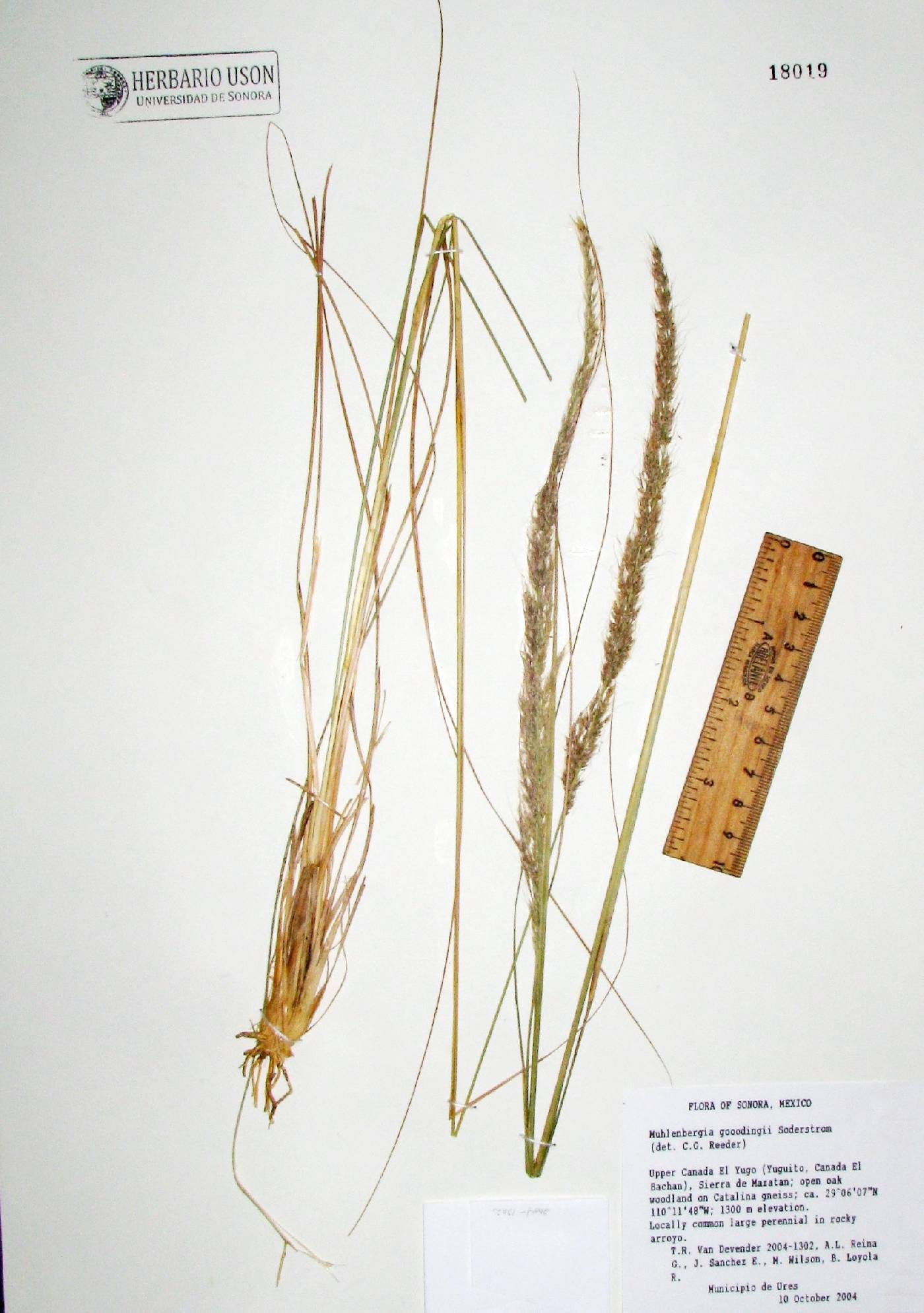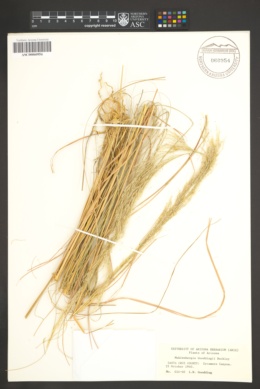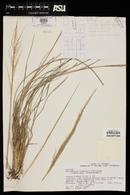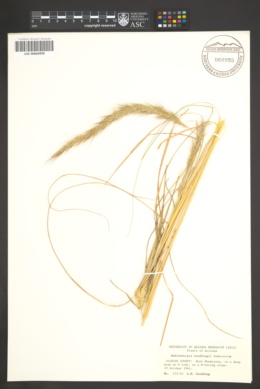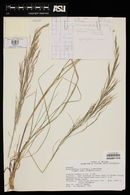Muhlenbergia gooddingii
|
|
|
|
Family: Poaceae
Goodding's muhly, more... (es: liendrilla)
|
Plant: Caespitose perinnial Culms: 60-1110 cm tall; nodes 4, glabrous below Sheaths: Rounded to strongly compressed, rarely slightly keeled, glabrous, stramineous, inflated when old. Sheath auricles lacking. Blades: culm blades long and narrow, becoming filiform, conduplicate or somewhat involute when dry, 50 cm. or longer, about 2 mm. wide when unfolded, upper surface of blade scaberulous or scabrous, the lower surface scabrous, old blades firm brown, strongly arcuate at the base; upper throat glabrous to scaberulous; collar glabrous. Panicle: narrow, nodding the branches appressed or ascending; dense stramineous or light purplish green, 22-45 cm. long, 2-4 cm. wide; axis scaberulous; primary branches mostly 3-5 (rarely as much as 0.5 cm. long, floriferous to near the base, the secondary branches mostly 1-2 cm. long, tertiary branches lacking or, when present, 1 cm. or less long (averageing2 mm. in the holotype) Ligules: frim, brown and broadly decurrent at the base, becoming more membranous and lacerate avove, the firm lower part 4-7 mm long, the upper membranous part 1 cm. or longer Glumes: equal or the second a little longer than the first, acute, dentate, many bearing a tiny awn, glabrous or punctate scaberulous, nerveless or indistinctly 1-nerved Lemmas: a little shorter than the glumes, acute, mostly glabrous except for sparse hairs near the base of the lateral margins and/or mid-nerve, 3-nerved, excruuent from below the tip as a flexuous yellow or purple awn 1 cm. or longer. Paleas: about equal to the lemmas, glabrous or rarely with sparse short hairs between the keels toward the base. Notes: This species superficially resembles some of M. emersleyi, as most of the collections have been named. It differs in the rounded or compressed, but rarely keeled, basal sheaths, firm ligules brown below and membranous above, and long attenuate blades becoming threadlike or filiform. The old blades are usually arcuate at the base. Of the spikelet features to distinguish the species, the lemma and palea are significant; in M. gooddingii the hairs on the mid-nerve and margins are sparse and confined to the lower part and the palea is glabrous between the keels. The panicles of M. gooddingii are narrow and densely flowered and the lemmas are always awned. Such plume-like panicles among the filiform foliage probably create a distinctive look to this species in the field. Reference: Contributions from the United States National Herbarium 34(4): 115. 1967. |

